18 Best Crete Gorges You Need to Visit
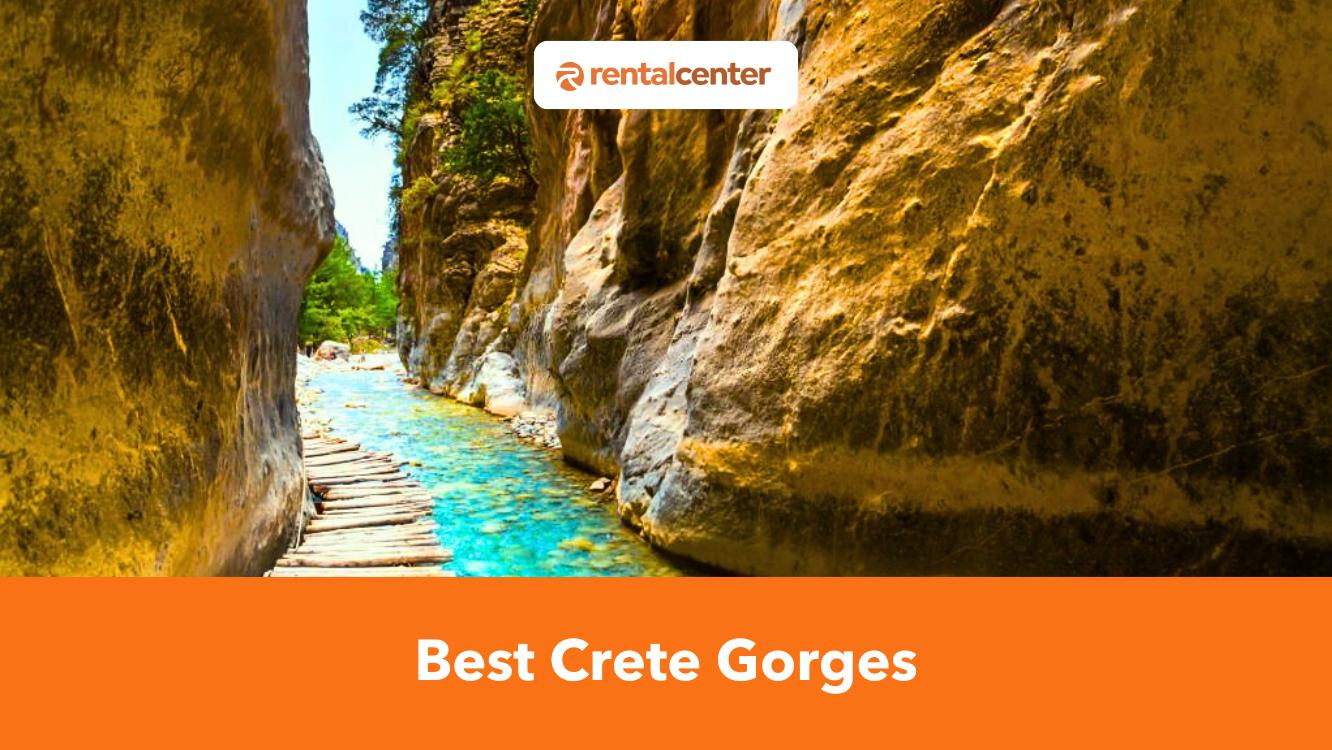
Crete is the largest and most populous island in Greece. It is ranked 88th largest island in the world. Crete hosts the largest number of gorges in Greece. For years, hiking has been a tourist attraction in Crete. More and more tourists, mostly from German-speaking countries, come for hiking. Most Crete Gorges hikes start in the mountains and end at sea. Some gorges will require mountaineering equipment to climb. Other gorges can be accessed by walking on easy trails for just a few hours. The Samaria Gorge National Park is one of the most prominent gorges in Crete. It has been Greece’s National Park since 1962. Most hikers will love the Samaria Gorge National Park because it offers many hiking trails with majestic views. The Samaria Gorge National Park can be considered a Crete budget-friendly gorge. The Topolia Gorge, in the inland area of Kissamos, offers an impressive landscape. Topolia Gorge is known to locals as the “Gorge of Caves”, due to the many caves found along its route. According to local traditions, Topolia Gorges hosted fairies and the magical Minoan Goddess Vritomartis. The Ha Gorge is located on the west side of the Thrypti mountains near Vasiliki and the small village of Monastiraki. The gorge is very narrow, and the walls rise hundreds of metres. The area inside Ha Gorge is an important wildlife habitat. Crete has the best gorges every tourist needs to visit.
On the island of Crete, there are even roads running through several Crete popular gorges; one can appreciate the beauty of nature with a rental car. Almost all Crete gorges require a lot of walking and hiking. Tourists will be needing a car to get to their location and explore the island. Car rentals are very accessible on the whole island of Crete. They offer different kinds of services, and packages depending on the location a tourist would visit. In Crete, a car can be rented for just a day trip up to a whole month-long holiday. Car rental in Crete is highly recommended for tourists who are not fans of hiking and adventure. One can go driving around the beautiful island of Crete and enjoy the gorgeous view of the gorges.
Find below an interactive map of the best Gorges in Crete.
Find below an image map describing the 18 best Gorges in Crete.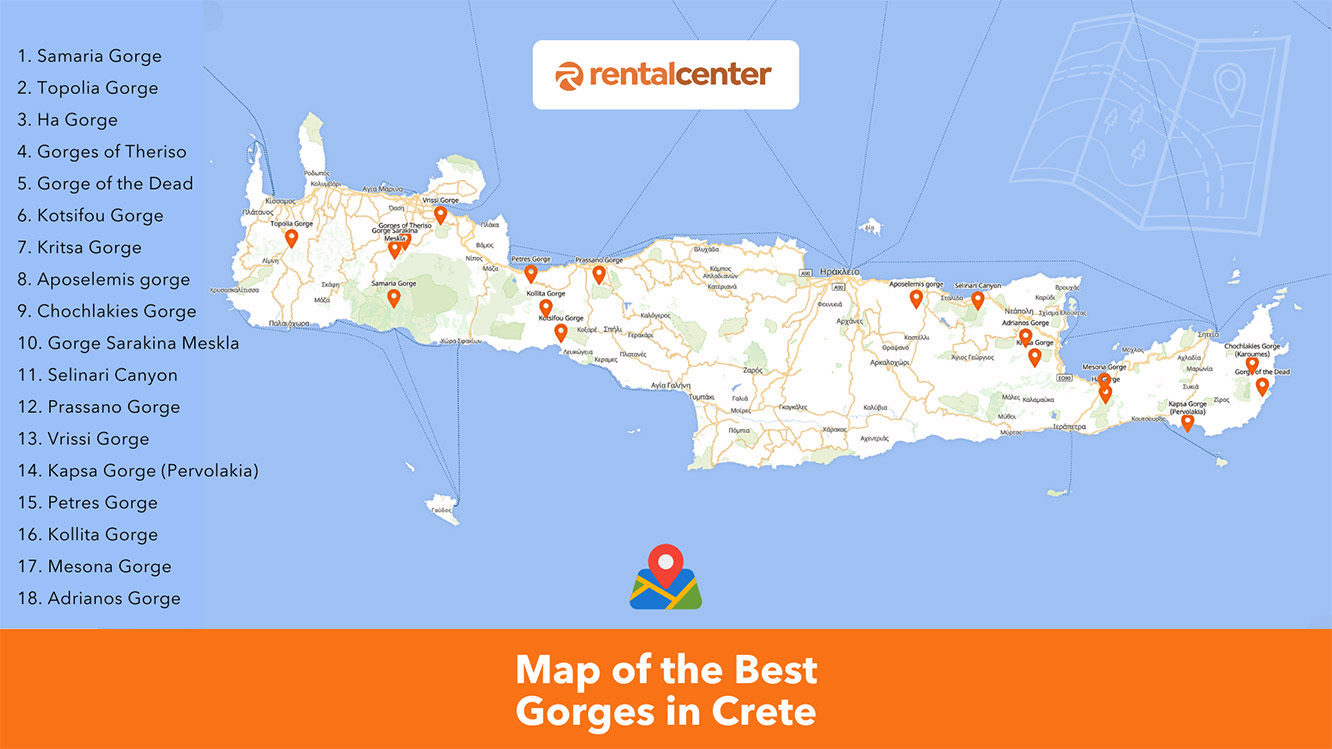
1. Samaria Gorge National Park
One of the most scenic national parks in Europe, the Samaria Gorge National Park stretches more than 10 miles into the southern coastal region. Samaria Gorge National Park has been Greece’s National Park since 1962. It is located on the island of Crete, a famous tourist attraction of the island, and a World Biosphere Reserve. It offers many hiking trails for tourists and locals.
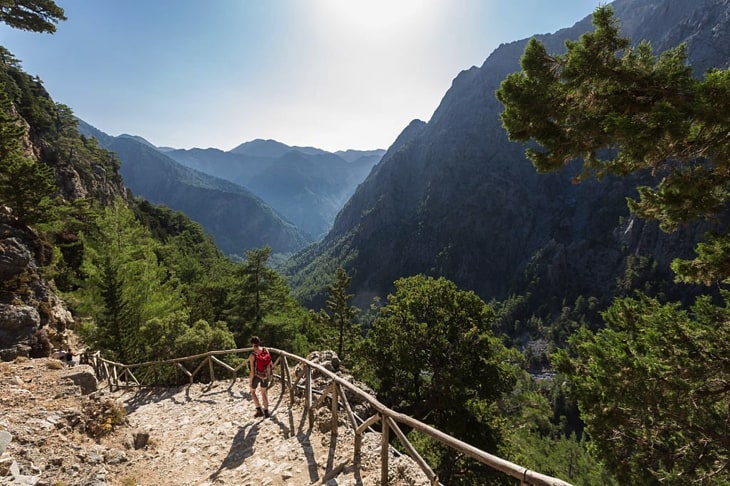
Local tourist operators provide organised tours to Samaria Gorge. The tour package includes bus transportation from one’s hotel to the entrance. There will be a bus connection waiting for hikers after they disembark the ferry boat in Sougia or Sfakia. There is also a one-day round trip from Chania or from Sougia or Paleochora, in case a tourist wants to be on their own. Samaria Gorge National Park is Crete’s second most visited tourist spot and the most popular walk by far. Every day there may be up to 2000 or more people walking through the gorge of Samaria. The best time to visit the National Park is between May 1 and October 15 each year, it is open from 6 am until 4 pm. Most tourists gave positive reviews to Samaria Gorge National Park. The stunning view of the park makes the long hike worthwhile. Other reviews state that hiking is definitely not easy, especially if one is not a seasoned hiker. There are strict rules that need to be followed inside the Samaria Gorge National Park. An average walk takes 6 to 7 hours in Samaria Gorge National Park, which includes some recreational points inside the park where visitors can stop for a while to rest and appreciate the breathtaking scenery. Tourists and other visitors who have experienced hiking in Samaria Gorge Park described it as a medium-difficult hike. The hike is mostly downhill and the most challenging part is the first 6 km of the trail.
2. Topolia Gorge
The Topolia Gorge is located in West Crete, and it runs along the road leading to Elafonisi via Elos. It is located in the inland area of Kissamos. The Topolia Gorge is impressive, and it has wild landscapes. The vertical walls have a height of 300 metres and the width of the stream bed varies between 5 and 50 metres. It has a thick watercourse with plane trees and other Cretan countryside typical plants. The many shallow caves and hollows in the walls are the characteristics of Topolia Gorge. There are two points of access to Topolia gorge, one in the north located near Omalos plateau, and one in the South, near the coastal village of “Agia Roumeli”. The north entrance is accessible by car, but the south entrance is only accessed by boat. There are buses that operate one daily from Kissamos to Topolia. Many tourists appreciate driving along the winding road compared to hiking. The majestic path is located south of Kissamos and the scenery consists mostly of vegetation. One of the most impressive features of Topolia Gorge is the shadows that fall onto its rock faces mid-afternoon. Tourists describe it as a gorgeous sight to behold. The best time to visit Topolia Gorge is during springtime in August. The average walk in Topolia Gorge will take 3 hours. Most visitors generally considered Topolia Gorge a moderately challenging route.
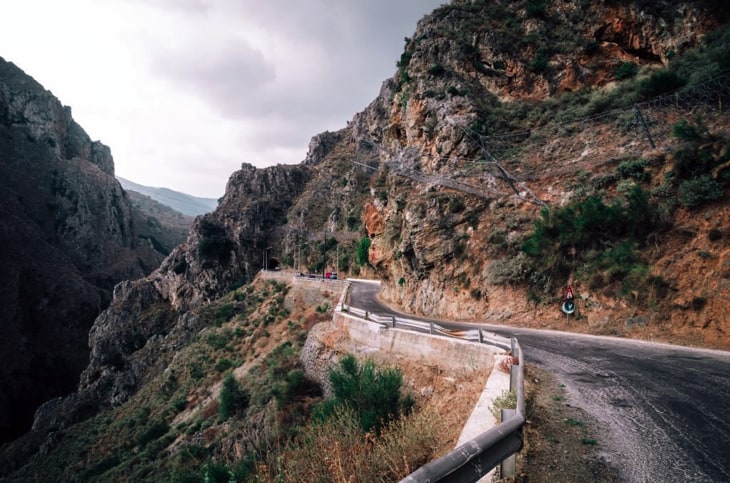
3. Ha Gorge
Ha Gorge, or Φαράγγι Χά, is in eastern Crete, on the western slope of the Thrypti mountain range, near Vasiliki in the Lassithi region.
Ha Gorge is located 15 kilometers (9.32 miles) north of Ierapetra, in the Lassithi Plateau. Visitors can drive from Ierapetra towards Agios Nikolaos, detour through Episkopi, and follow a 10-kilometer (6.1 miles) road to Thripti, where the church of Saint Anne marks the entrance to the gorge.
Ha Gorge is known for its challenging terrain, making it one of Crete’s most technical gorges. The gorge is 1.5 kilometers long, with waterfalls up to 35 meters high. At some points, it narrows to 30 centimeters between cliffs that rise 400 meters. The difficulty level is rated 8 out of 10, suitable only for experienced hikers and canyoners. Navigation requires canyoneering equipment and involves 33 rappels, with the longest descent being 35 meters (114 feet) . A full traverse takes 4 to 5 hours for skilled climbers with proper equipment. The total altitude difference is 220 meters (721 feet) , starting at 800 meters (2.624 feet) near Saint Anne church and descending to 100 meters (328 feet) near Monastiraki village.
Ha Gorge, largely untouched by human activity, hosts rich flora and fauna, with unique geological formations, including identical rock beds and folds on both sides. Midway through the gorge, the 215-meter (705 feet) Mastoras waterfall, one of Greece’s tallest free falls, contributes substantial water flow.
The best time to visit Ha Gorge is from January to May. During this period, the gorge features small ponds and waterfalls, but climbers must exercise caution, as it can become a dangerous waterfall in winter.
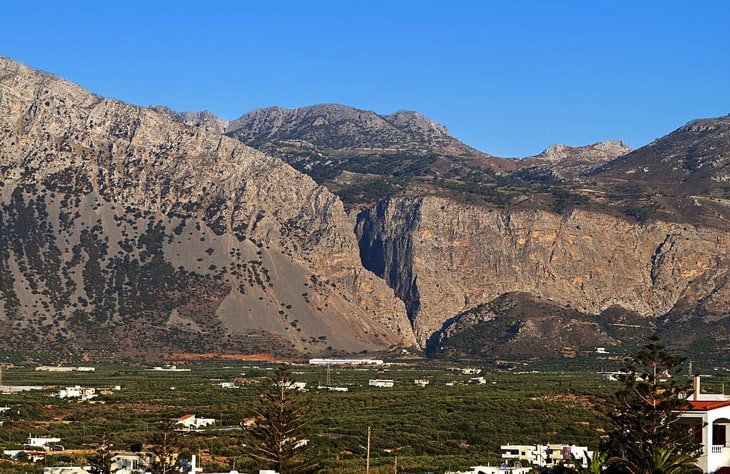
Ha Gorge requires a professional guide due to its technical difficulty and dangers. Guided tours provide the necessary equipment and expertise for safe navigation.
Visitors who can’t undertake the full canyoning experience can hike from the Monastiraki exit for an easier way to see Ha Gorge. The hike leads to a pond at the base of the final waterfall and passes ancient grain mills, adding historical interest.
4. Gorges of Theriso
The Gorges of Theriso are located near the city of Chania. Theriso is a tiny Cretan village and has a remarkable history with the freedom and independence of the people of Crete. Visitors can go there by car. There are also bus services on the island and car rentals. The main gorge is 6 kilometres long. The beautiful Gorges of Theriso has dramatic mountain scenery and gorges. It is a wonderful place to go for a walk and is popular with hikers, and rock climbers. The Gorges of Theriso are known for its many traditional tavernas in the small village, where they serve famous Cretan lamb and abundant local fresh produce. The tourists’ reviews of Gorges of Theriso are relatively nice due to its relaxed and quiet ambience. There are good reviews about the peaceful and historical village of Theriso. The food also receives good reviews, mainly because of the fresh ingredients used. The majestic landscape of Gorges of Theriso makes it a popular tourist destination. The best time to visit the trail is March through November. Like any tourist spot in Crete, wearing a mask is still required in indoor areas in Gorges of Theriso. Most visitors enjoy driving through the lovely gorge for about 20 minutes. Then it will lead to the small village where visitors can do a 3 hr hike into the high mountains. The Gorges of Theriso are a must-visit place with an easy level of difficulty.
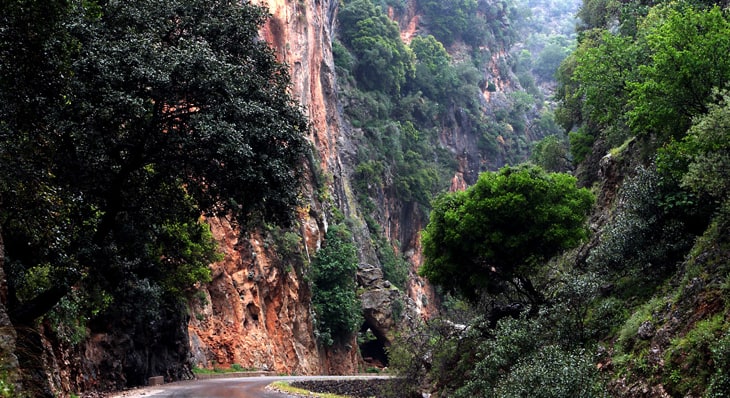
5. Gorge of the Dead
Gorge of the Dead also known as Gorge of Kato Zakros, starts a short distance from Ano Zakros, 100km southeast of Agios Nikolaos church, and ends at Kato Zakros beach. It is an exceptionally beautiful gorge, with its high walls with big caves. Tombs from the Minoan era have been found there; that is why it is called “Gorge of the Dead”. The beauty of the landscape and it’s easy accessibility makes it popular with tourists. Gorge of the Dead is accessible by car. Just leave them at the entrance and walk down the gorge. There are also buses and taxis available. Gorge is known as an archaeological site located in the area of Zakros on the far east side of Crete. Tourists mostly gave Gorge of the Dead good reviews due to its majestic views and its historical value. The beautiful gorge is an excellent place to hike, and it is surrounded by flowers during springtime. Tourists gave Gorge of the Dead good reviews and recommendations. One of the main attractions of Gorge of the Dead is the burial grounds in the caves and the gorgeous mountain view. The best time to visit the Gorge of the Dead is during spring and summer, when most riverbeds are dry. The Gorge of Dead is an approximately 2-hour hike of medium difficulty, suitable for young and old in good fit.
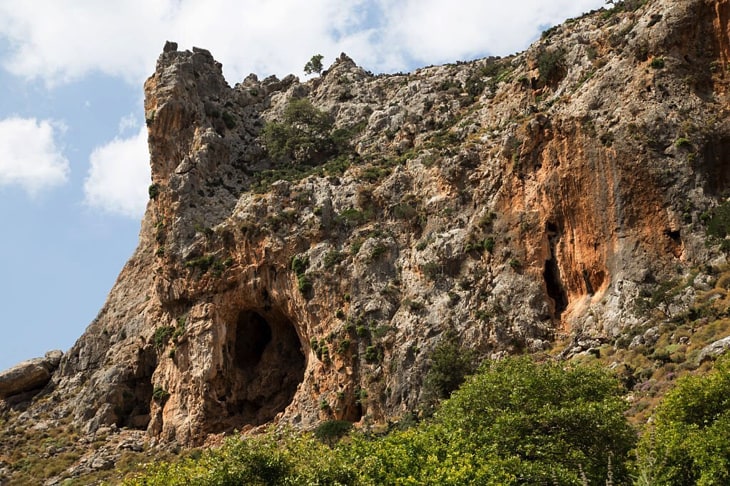
6. Kotsifou Gorge
Kotsifou Gorge is a gorge on the southern side of the western part of the island of Crete. It is noted for the high number of Cretan endemic plant species that grow in the area. The road in Kotsifou Gorge runs through a narrow slit in the mountains. It is located west of the mountain of Kouroupa, north of the town of Plakias. It is on the road between Sellia and Angouseliana. Furthermore, it is one of the beautiful gorges on the island of Crete. When planning to visit the Kotsifou Gorge, a rented car is advisable to go around the road and enjoy the view. The beautiful roads and landscapes make the gorge very accessible to visitors. It is a highly recommended place to visit, especially for nature lovers. There is a little Orthodox chapel right on top of the hill that is popular with tourists. Although it has some pretty good reviews about the Kotsifou Gorge, there are some tourists who find it not worth a special trip. The cool landscapes, and flowering bushes growing on the hillsides, is what make Kotsifou Gorge a nice place to visit. The best time to visit Kotsifou Gorge is from mid-May to June, or from September to October. Mostly in early summer, when beautiful wildflowers can be spotted throughout the area. Tourists can drive for 3 hours on the beautiful road of Kotsifou Gorge. Health protocols are still observed anywhere in Crete. In Kotsifou Gorge, tourists are no longer required to present their vaccination cards when entering an establishment, but the mandatory wearing of a facemask is still observed. The Kotsifou Gorge has easily accessible roads and has an easy level of difficulty when planning to go hiking.
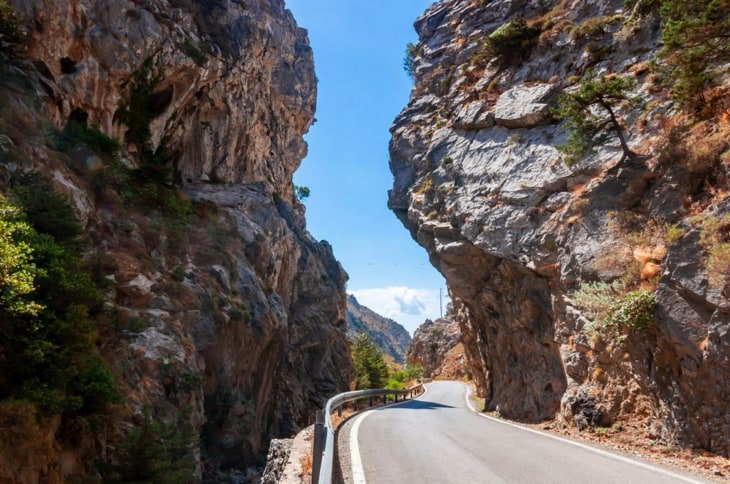
7. Kritsa Gorge
Krista Gorge starts just about in the picturesque village of Kritsa. It is 9.5 km southwest of Agios Nikolaos and ends at the Tapes village. Krista Gorge is 4 km long and its width is only 1.5 m in some areas. It is pretty much accessible, but visitors must climb over some big rocks. Kritsa Gorge has an impressive entrance to the gorge, as the mountain is torn in two, shaping the narrow passage of Havgas. Kritsa Gorge is a popular trail for hiking flanked by steep cliffs. There is a shorter route that follows the gorge for about 2 km, before going uphill. Follow the trail to the right, parallelling the gorge below the parking area. Tourist reviews include the gorge is easy to find and well-marked along the trail. Some reviews from tourists noted that Kritsa Gorge is a great hike for families with younger children. Tourists who love to hike must visit the stunning Kritsa Gorge. There are also restaurants around the area where they serve delicious Greek salads and moussaka. The best time to visit Kritsa Gorge is all year round, except when it has rained previously and the ponds are full of water which blocks the passages. Same with other places in Crete, wearing a mask is still mandatory and other health protocols. It would take about 2 hrs to complete a hike in Kritsa Gorge with a moderately challenging difficulty.
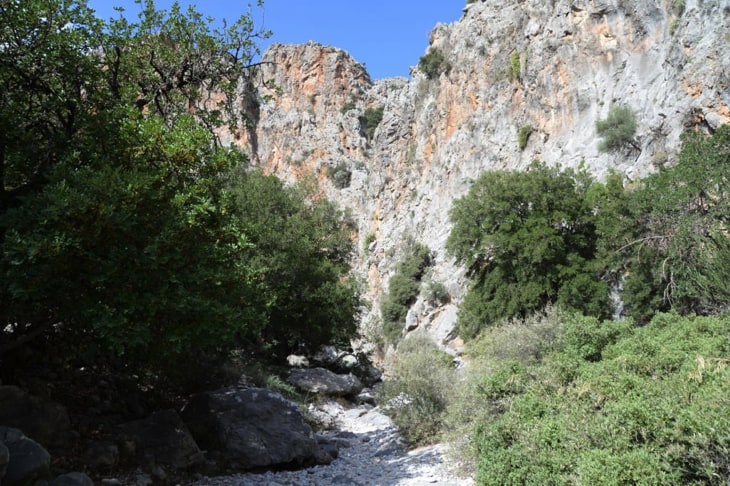
8. Aposelemis gorge
The Aposelemis Gorge is the longest and most important geological gorge in the northern part of Heraklion. The gorge exits at the settlement Agriana. It is crossed by the Aposelemis river, but the gorge has water only after heavy rain. The local municipality in recent years has created a very beautiful path along the bed, which makes walking enjoyable and very accessible. The easiest way to access the Aposelemis gorge is through its north exit. It is a great place for hikers where a lot of climbing is involved. There are taxis available in the area. It would take 2 to 4 hours to traverse the gorge. The Apolosemis gorge has excellent views and at the top, almost all of Crete can be seen. Some popular tourist reviews were about their hiking experience and the beautiful, quiet, and ideal place with friends. The best time to visit Aposelemis Gorge is during summer. There are health protocols that need to be followed on Aposelemis Gorge like the mandatory wearing of masks in indoor establishments. The Aposelemis Gorge would take 2 to 4 hours of hiking with medium difficulty.
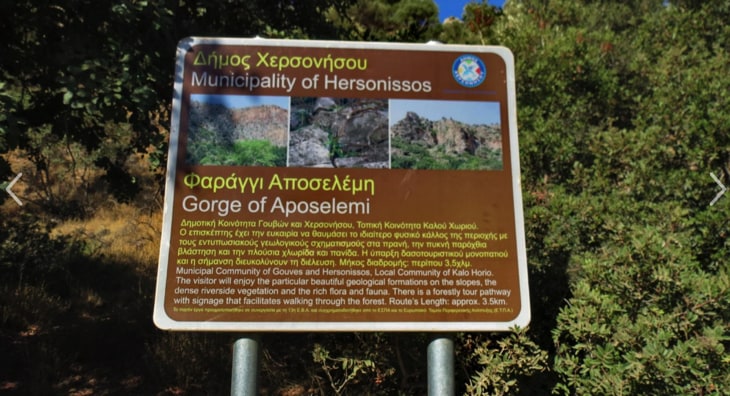
9. Chochlakies Gorge
Chochlakies Gorge, also known as Karoumes Gorge, is located in the eastern part of Crete, near Zakros, in the isolated Lasithi region. Visitors can reach the gorge either by traveling to Chochlakies village, from which a narrow road leads to Agia Marina church, a convenient parking spot, or by walking from Agathias village near Palekastro. Public transportation is limited in this remote area, so renting a car is recommended for easier access.
Chochlakies Gorge provides a moderate hike with some challenging sections. The gorge spans 3.5 kilometers (2.17 miles) , and the hike takes 90 minutes to complete. The terrain varies, featuring sparse vegetation and bare rocks.
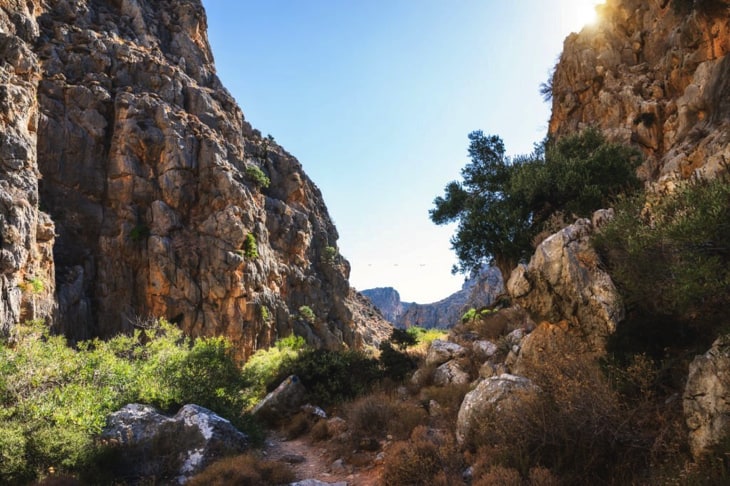
Hikers on the European footpath E4, marked with blue signs, pass through Chochlakies Gorge, encountering a restored watermill, high rocky walls, and a valley that turns into a wetland in winter before reaching Karoumes beach. The moderate hike includes steep, rocky sections, and in spring, hikers may need to climb over rocks to avoid water pools. The wide gorge, exposed to strong winds, presents additional challenges. Recommended gear includes hiking shoes, a wide-brimmed hat, sunscreen, water, snacks, a camera, and gloves for climbing over rocks.
The best time to visit Chochlakies Gorge is spring and autumn, when the weather is mild and vegetation is lush. Spring offers abundant water, diverse plants, and rock-climbing challenges around water pools. Summer has dry conditions that make riverbed crossings easier but brings high temperatures. Autumn brings pleasant temperatures and fewer visitors. Winter might make the gorge inaccessible due to high water levels.
Chochlakies Gorge is child-friendly, providing an easy to moderate hike for families, where children can enjoy spotting wildlife, such as goats, and explore the diverse landscape and geological formations. The hike ends at Karoumes beach, which offers opportunities for swimming or picnicking.
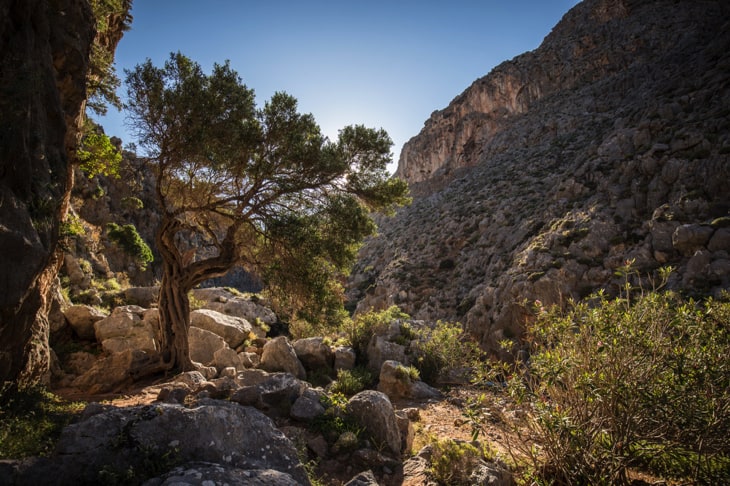
Guided tours are available for Chochlakies Gorge, with advance booking recommended. These tours offer valuable insights into the area’s geology, history, and ecology, though specific tour operator information is limited. Due to the remote location, restaurants and food services are limited, so visitors should bring their own food and water. The nearby villages of Chochlakies and Zakros offer basic services, but it’s best for visitors to come prepared.
10. Gorge Sarakina Meskla
Sarakina Meskla is a gorge in the village of Meskla, in Chania. It can be easily accessed driving past Agia leading Omalos. The gorge is quite small and would take around 20 minutes to cross. The majestic rock formations are highly impressive and definitely worth the time to visit. The name sarakina comes from the faith of the locals that Saracenes used to hide there. It is hidden in a ravine with some big cypress and plane trees. Local authorities tried to promote the site, and they built trail paths that crossed the gorge starting from Meskla. Tourists and visitors would love the landscape that changes after the first 10-minute hike to boulders of limestones. It is a wonderful sight and a true miracle of nature. It receives high ratings from tourists due to its well-maintained trail with a perfect viewpoint at the top. The amazing rock formations and the tranquil silence, only interrupted by chirping birds during the hike, are what make it popular with tourists. The best time to visit Gorge Sarakina Meskla is in the month of May through November. It would take an average of 2 hours and 30 minutes to complete the trail with a moderate level of difficulty.
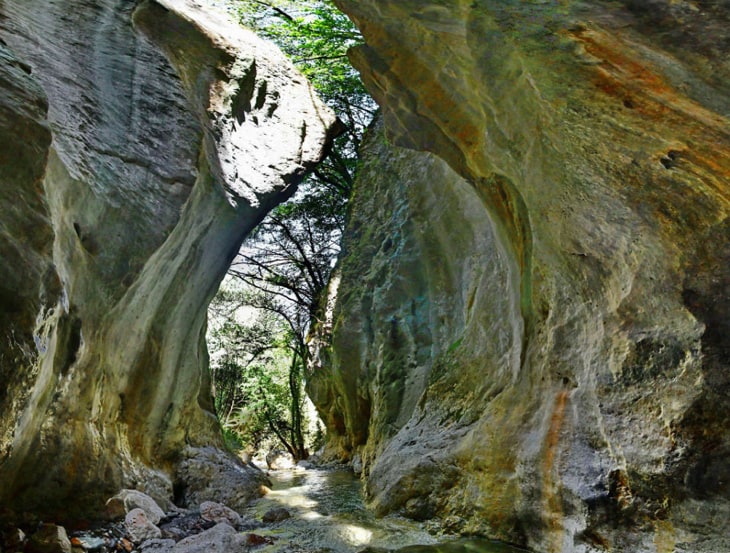
11. Selinari Canyon
Selinari Canyon, or Gorge Sellinari, lies in eastern Crete, 45 kilometers (28 miles) east of Heraklion and 21 kilometers (13 miles) west of Agios Nikolaos, on the eastern slopes of Mount Selena. The National Road between Heraklion and Agios Nikolaos runs along the canyon, ensuring easy access and making it well-known among locals.
The historic Monastery of Saint George, located within the canyon, is a major cultural landmark. According to long-held local superstition, any traveller who passes through Selinari Gorge without stopping at the Monastery of Saint George will be cursed with bad luck. This belief has been prevalent since the mediaeval era, when travellers journeying through the gorge routinely stopped to rest themselves and their animals at the monastery. Even today, Cretans consider it foolish to traverse Selinari Gorge without pausing at the monastery, to uphold the legend and avoid potential bad luck.
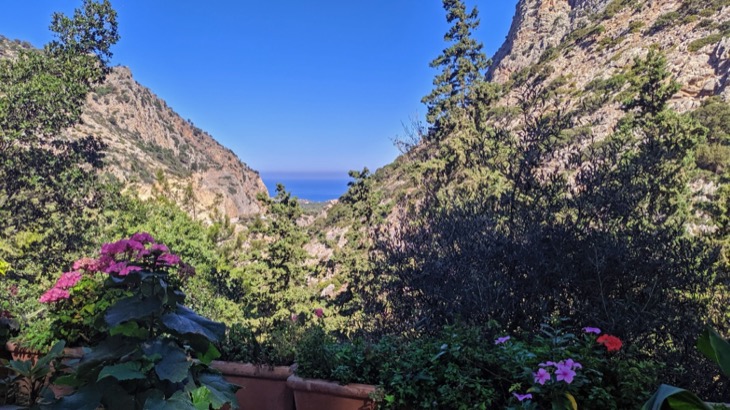
Photography is permitted, but visitors should ask for permission before taking photos of people or in sensitive areas like the monastery or church.
Selinari Canyon offers different exploration options, from driving to walking and hiking. Visitors can drive through the canyon along the National Road, enjoying the scenery. A walking trail runs from the canyon’s entrance to its exit near Milatos. Another option is to follow the old National Road, which runs parallel to the new one and passes through the gorge. The main hiking trail, 1.5 kilometers (0.93 miles) long, takes 30 to 45 minutes to complete, depending on the pace and time spent enjoying the surroundings.
Selinari Canyon provides an easy, accessible outdoor experience suitable for all ages and fitness levels. The well-maintained path takes hikers alongside flowing water and beneath cliffs, offering a scenic backdrop. Visitors can choose between the main Canyon Trail and the more challenging Ridge Trek. These trails take 2-5 hours to complete, covering distances of 5 to 9 kilometers (3 to 5.6 miles).
The ideal time to visit Selinari Canyon is during spring and autumn, when the weather is mild and vegetation is lush. The canyon remains accessible year-round, allowing visits in any season based on individual preference.
Facilities near the canyon are limited. Visitors should bring their own food and water, as there are no toilets or restrooms along the trail.
Nearby attractions to Selinari Canyon include Avlaki Beach, 2.9 kilometers (1.8 miles) from the canyon, ideal for swimming, snorkeling, and sunbathing. Malia, 8.9 kilometers (5.5 miles) away, is known for its lively nightlife and beach parties. Milatos, a coastal village, offers a small fishing harbor and beach, while Sissi Beach, in the charming fishing village of Sissi, provides a quiet sandy beach.
12. Prassano Gorge
Prassano Gorge is located 10 kilometers (6.2 miles) southeast of Rethymnon in central Crete. The gorge starts south of Prasses village and passes through the rocky Gargana hills, ending in Platania, east of Rethymnon.
Prassano Gorge is closed to visitors outside mid-June to mid-October due to water flow, so visitors must plan their trips carefully.
The hike in Prassano Gorge takes about three hours through large rocks and difficult passages and route is 3 kilometers (1.9 miles), offering a moderate to difficult trek based on hiker experience. Prassano Gorge’s terrain features untamed conditions, including large rocks, steep inclines, narrow paths, and slippery surfaces. Some areas require rock climbing or scrambling, increasing the difficulty. Hikers should expect unmarked or poorly defined paths and take caution due to the rugged environment. Sturdy hiking boots with good ankle support and traction are necessary for safely navigating the rocky, slippery terrain in Prassano Gorge.
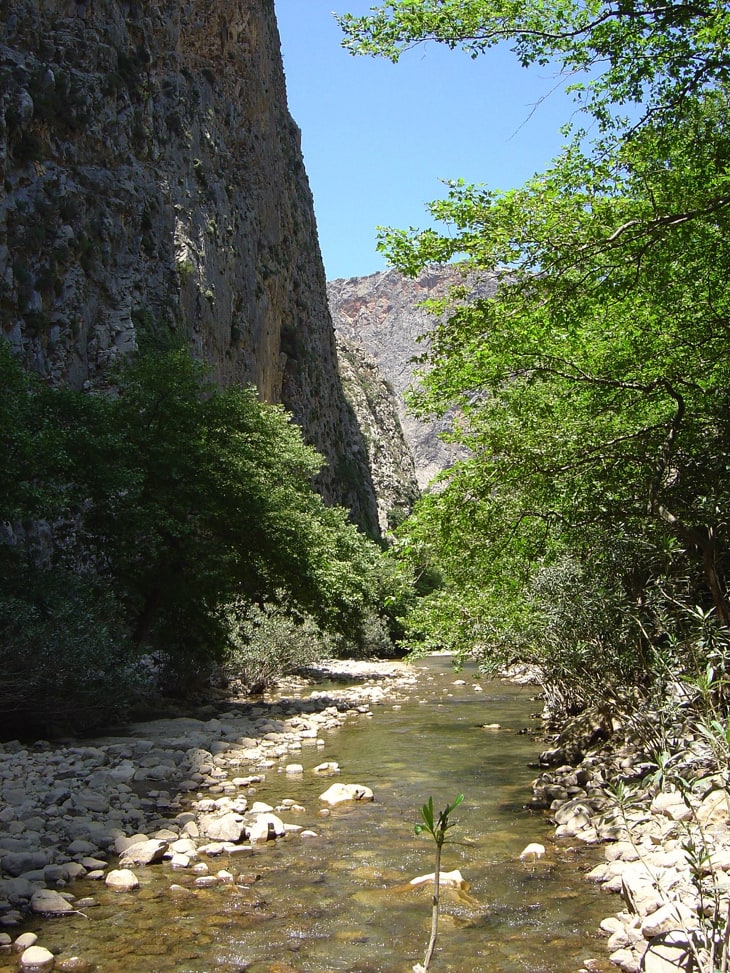
The ideal time to visit Prassano Gorge is from mid-June to mid-October, when water flow is reduced and weather is more stable, making the hike safer.
Prassano Gorge is a vital biotope in Crete, home to buzzards and Bonelli’s eagles. The area has lush vegetation and tall plane trees, creating a scenic environment and functions as an overflow channel for the nearby dam, with a stream running through it. Despite this, hikers should carry their own drinking water and not rely on natural sources.
The hike of Prassano Gorge lasts around three hours, covering 3 kilometers (1.9 miles). Due to the difficult terrain and challenging passages, it suits experienced hikers or those in good physical shape. The short distance allows for completion in a single day, so camping isn’t required.
Nearby attractions to Prassano Gorge are Prasses Village, Potami Valley and Arkadi Monastery. Prasses Village offers a view into the Cretan cultural history and serves as a good spot for tours and walks. Prasses is a medieval village reflecting Crete’s diverse cultural history. The village features Venetian mansions, Turkish farmsteads, and Orthodox churches. Prasses, located on the slopes of Vrysinas, serves as a gateway to the southern coast, surrounded by lush Cretan landscapes. Potami Valley, located south of Prasses, houses the Potami dam. Arkadi Monastery, near Arkadi Gorge, provides another hiking opportunity in the region.
13. Vrissi Gorge
Vrissi Gorge lies in Crete’s Chania region, between Zourva and Lakkoi villages. It belongs to the White Mountains range, known for rugged landscapes and diverse ecosystems. Visitors can access Vrissi Gorge from Zourva or Lakkoi by driving from Chania, the nearest major city, which is 30-40 kilometers (18-25 miles) away, along winding, narrow roads typical of Crete’s mountainous terrain.
The Vrissi Gorge hike has moderate difficulty, suitable for hikers with some experience. The route covers 5-6 kilometers (3-4 miles) and typically takes 3-4 hours. Terrain in Vrissi Gorge varies, with rocky paths, river crossings, and sections requiring boulder scrambling, while the steep canyon walls add visual appeal but require careful navigation. Marked trails, using blue and red signs, guide hikers through most of the gorge, but after heavy rain, the terrain can shift, and hikers may need to adjust their route.
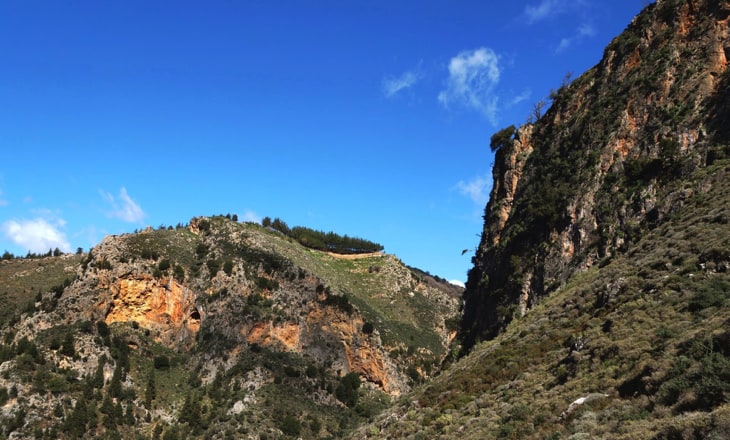
Vrissi Gorge’s relative obscurity is a major attraction. Unlike the popular Samaria Gorge, Vrissi sees fewer visitors, offering a more solitary and authentic hiking experience in Crete. The gorge features high cliffs, clear waters, and diverse plant life, with several narrow trail sections adding adventure and offering dramatic views of the canyon walls.
The ideal season for hiking Vrissi Gorge is from late spring to early autumn (May to October), when weather remains stable and lower water levels make river crossings easier. Vrissi Gorge may become inaccessible in winter or early spring due to heavy rains, which can raise water levels, making the hike dangerous or impossible. Always check local conditions before hiking.
Vrissi Gorge hosts diverse flora and fauna typical of the Cretan mountains, and hikers may see mountain goats, birds, and small reptiles. Lush vegetation, including plane trees, thrives in the gorge’s unique microclimate. Water features highlight the Vrissi Gorge hike, with several river crossings, waterfalls, and pools offering rest and refreshment points along the route.
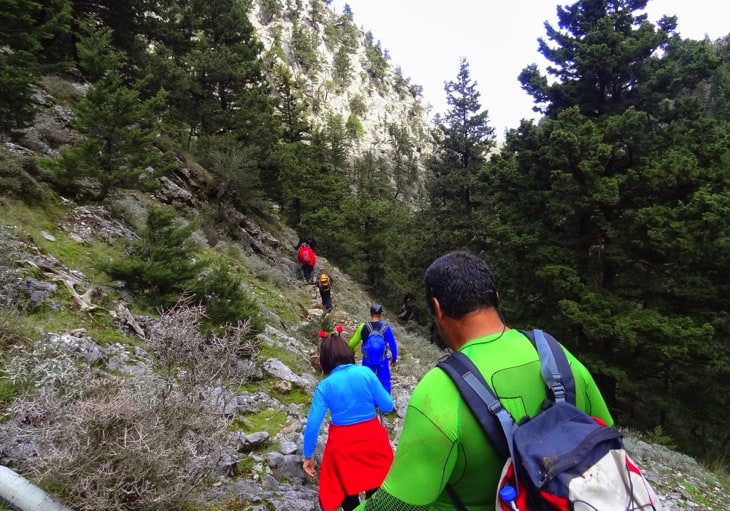
Hikers should bring plenty of water, as reliable water sources are limited along the trail. Although the river runs through the gorge, it’s safer to carry drinking water rather than relying on natural sources. Sturdy hiking boots with good ankle support are essential for hiking Vrissi Gorge due to the slippery, uneven terrain. The hiking trail in Vrissi Gorge can be completed in a day, so camping isn’t needed, but starting early is advised to ensure enough time to finish the hike and return before dark.
Vrissi Gorge is better suited for experienced hikers due to its challenging terrain and occasionally unclear path, and beginners might struggle with sections that involve scrambling or navigating dense vegetation. Safety is crucial in Vrissi Gorge, as the area is remote with limited or no mobile coverage in parts of the canyon, so hikers should inform someone of their plans beforehand and carry basic first aid supplies.
14. Kapsa Gorge (Pervolakia)
Kapsa Gorge (Pervolakia Gorge), a natural canyon on Crete’s southeastern coast, offers a mix of scenery, history, and hiking challenges. It lies 8-9 kilometers (5-6 miles) east of Makrigialos and 33 kilometers (20 miles) east of Ierapetra, with entry points at the northern entrance near Pervolakia village and the southern exit by Kapsa Monastery, overlooking the Libyan Sea. Visitors can reach the gorge by driving from Ierapetra or by using public buses running between Goudouras and Ierapetra, which stop near the monastery exit. Another option is to drive to Pervolakia village or Kapsa Monastery and arrange for a taxi from Makrigialos after the hike.
The hiking route through Kapsa Gorge spans between 3.5 4 kilometers (2.2-2.5 miles), and the hike takes between 1.5 to 2 hours depending on the starting direction. Ascending from Kapsa Monastery to Pervolakia takes around 2 hours, while descending from Pervolakia to the monastery is easier, taking about 1.5 hours. The terrain is moderately challenging, rated 1 out of 10 in difficulty, with high, barren walls and limited vegetation creating a dry, rocky environment. Hikers will need to scramble and climb in certain areas, though signposts guide the way, and sturdy hiking boots are recommended due to the rough terrain. Carrying sufficient water is also necessary given the dry conditions.
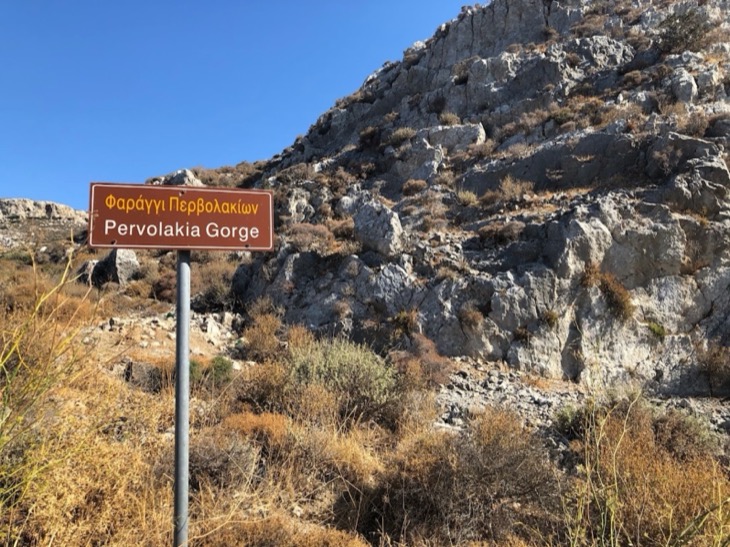
The best time to hike Kapsa Gorge is in spring or early autumn, when temperatures in Crete are milder, reducing the risk of extreme heat and avoiding the winter rains. These seasons provide more comfortable conditions for hiking through the arid terrain.
Kapsa Gorge hosts diverse plant life, including 14 endemic species, with the rare Limonium cornarianum found only on specific limestone maritime rocks within the gorge and the nearby Agia Fotia islet.
Kapsa Monastery, at the mouth of Kapsa Gorge, carries historical importance. It was founded in the 15th century, was destroyed by Ottoman pirates in 1471 and rebuilt in the 19th century by Monk Joseph Gerakionts.
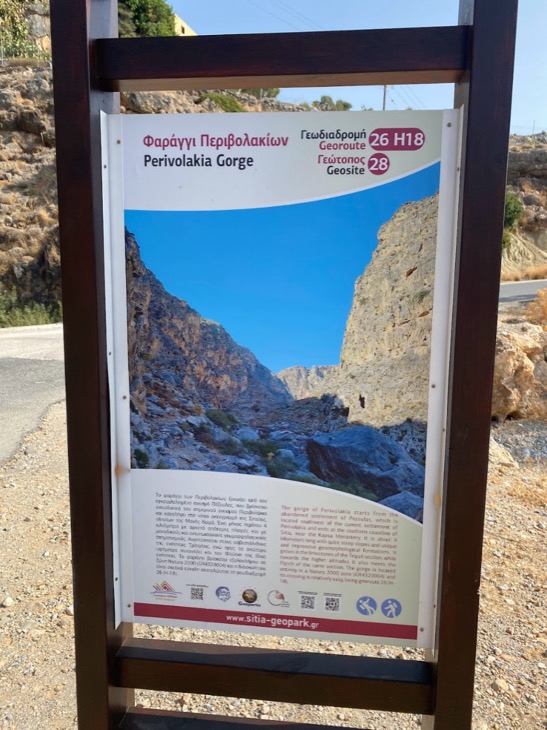
Kapsa Gorge is accessible to hikers with experience, but it may be challenging for beginners or those with limited mobility due to narrow sections and climbing points. Caution is essential, especially after rain, as the terrain can become slippery. In May 2015, two experienced Austrian climbers tragically lost their lives while descending a climbing track in the gorge. A small monument commemorates them, highlighting the need for safety in the area.
After the hike, visitors can swim at the pebble beach near Kapsa Monastery. The nearby traditional villages of Pervolakia and Pezoulas, with their charming houses, are also worth exploring.
15. Petres Gorge
Petres Gorge, on the island of Crete, lies 13 kilometers (8.1 miles) west of Rethymno town and connects to Petres beach, making it accessible to visitors. The gorge stretches 16 kilometers (10 miles) in total, with a narrow 1-kilometer (0.6 miles) section favored for hiking. A paved road leads to the entrance, allowing for easy access by car or bus from Rethymno. The best time to visit is between April and October, when weather conditions are mild, avoiding winter rains and summer heat.
The hike through Petres Gorge takes 1-2 hours over moderately challenging terrain, requiring some rock scrambling. The difficulty level is 2 out of 10, making it suitable for most hikers, including families with children, though visitors should expect some climbing and use caution around large rocks. Proper footwear with good grip is necessary for navigating slippery sections, and sun protection, ample water, and snacks are recommended. The gorge also has seasonal ponds, providing swimming opportunities during warmer months.
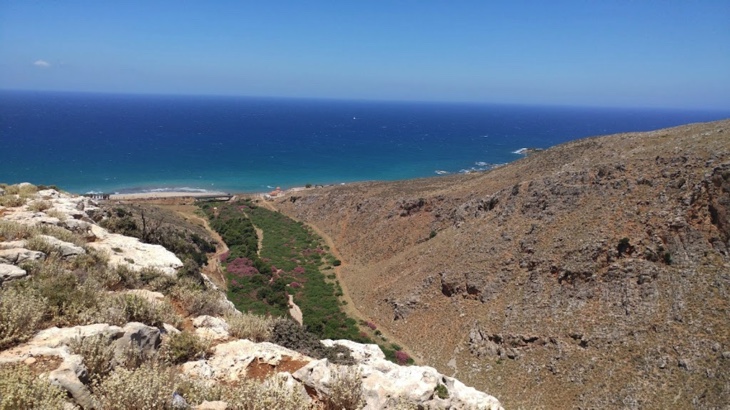
Hiking in Petres Gorge is generally safe but hazards like falling rocks, slippery slopes, and dehydration in summer pose risks, so staying on marked trails and using caution in narrow or climbing sections is important. Visitors should also be aware of seasonal water level changes and exercise caution accordingly. Fences are present in some parts of the gorge to contain goats, so carrying a cutter may be helpful if fences are locked.
After exploring Petres Gorge, visitors can access Petres Beach, 2.5 kilometers (1.6 miles) away, which is a mix of sand and rocks and offers facilities like accommodations, eateries, and a diving school. The rocky underwater landscape of Petres Beach makes it ideal for snorkeling and fishing. Nearby attractions such as Lake Kournas, the Venetian Fortezza Castle of Rethymno, and Mili Gorge can be explored with the flexibility of renting a car, preferably a 4×4 or SUV, to navigate the surrounding area.
16. Kollita Gorge
Kollita Gorge, also called Twin Ravines, is a natural landmark in Crete, near the village of Argyroupolis, 22 kilometers (13.67 miles) southwest of Rethymno, consisting of two parallel canyons: the eastern Moundros Gorge and the western Vilandredo Gorge, commonly referred to as Kollita Gorge. Kollita Gorge offers a 10.6-kilometer (6.58 miles) hiking route, typically completed in about 3 hours, where the terrain varies, featuring narrow passages where the towering canyon walls nearly touch.
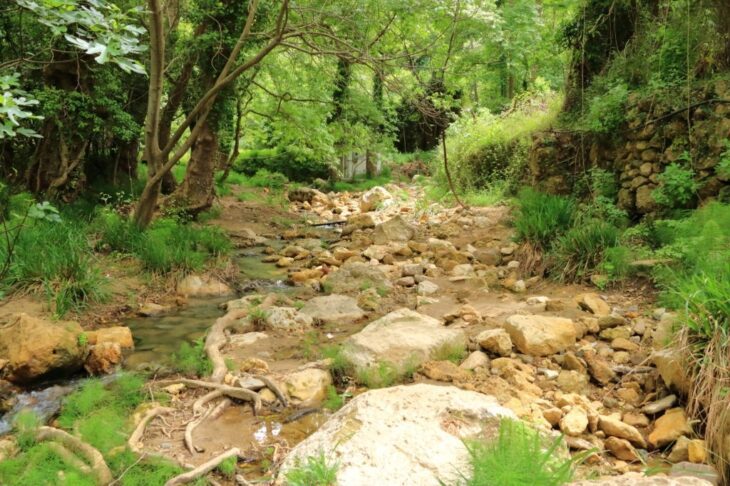
The trail starts and ends in Kato Poros, passing through both Vilandredo (Kollita) and Moundriano gorges, and runs along a riverbed surrounded by plane trees, fig trees, and holly. Water sources such as springs and small waterfalls are available, including the Kourtaliotis waterfall where hikers can swim, and a potable spring dedicated to Hermes allows hikers to refill water bottles. The hike is moderately challenging but suitable for different experience levels, with caution needed in some sections, and the optimal time to visit is between September and mid-October with mild temperatures.
Nearby, visitors can explore Argyroupolis, known for its Venetian architecture and trout tavernas, as well as the Roman Baths of Lappa, which were once supplied by the gorge’s water. A taverna near the canyon entrance offers typical Cretan cuisine.
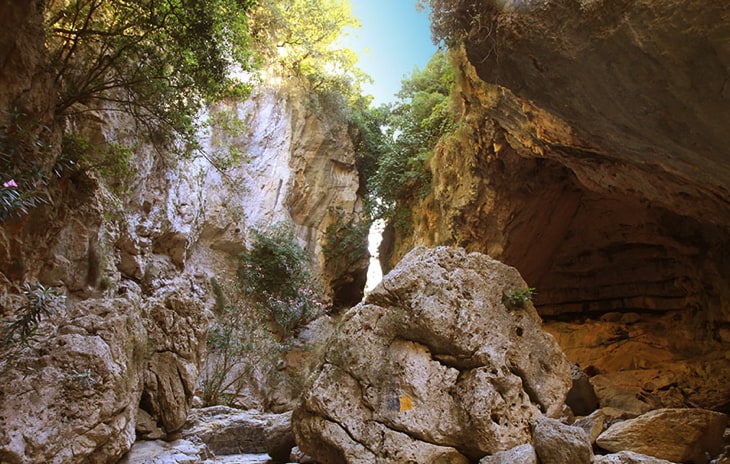
Hiking in Kollita Gorge is generally safe, but visitors should wear appropriate footwear, bring enough water, and stay on marked trails. It is considered a family-friendly activity but some sections may be challenging for young children or those with limited mobility. Visitors can drive from Rethymno, with renting a car being the most convenient option, especially during peak seasons.
17. Mesona Gorge
Mesona Gorge, a smaller but captivating natural canyon in Crete, is located northeast of Kavoussi village, between Sitia and Agios Nikolaos, connecting the Thrypti plateau with Kavoussi on the northern slopes of Mount Thryptis. Spanning 4 kilometers (2.48 miles), the gorge requires a few hours to complete, with its rocky terrain including steep sections, demanding proper hiking shoes with good traction.
Mesona Gorge, As part of Mount Thryptis’ northern slopes, contributes to the region’s geological and ecological diversity, offering an immersive experience despite being smaller than other Cretan gorges. Compared to more challenging gorges like Adrianos, Mesona offers a shorter, less strenuous hike, while still embodying the rugged, natural landscape typical of Crete.
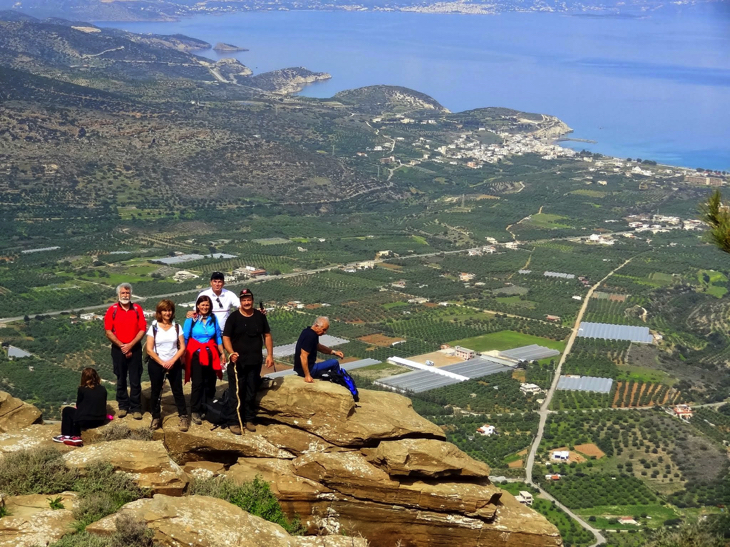
Visitors can access the gorge by driving to Kavoussi, with the entrance near the church of Agia Kyriaki, while spring and autumn provide ideal hiking conditions due to milder weather and less crowded trails. Hikers should prepare properly by wearing suitable footwear, bringing enough water, and informing someone of their plans. Carrying a first aid kit and a charged phone is recommended. For a guided experience, the Mountaineering Club offers registration and information on hikes, and though details on nearby facilities aren’t provided, basic amenities can be found in Kavoussi, requiring preparation when hiking in remote areas.
18. Adrianos Gorge
Adrianos Gorge, located in eastern Crete, offers a challenging hiking route that begins in the village of Adrianos and extends towards Agios Nikolaos. Access to the gorge is from the village of Adrianos, with Agios Nikolaos being the nearest major town. Transportation from Agios Nikolaos to Adrianos typically involves driving, so consider hiring a car in advance.
Adrianos Gorge is open year-round, weather permitting. Crete’s Mediterranean climate indicates that spring and autumn likely offer the most comfortable hiking conditions.
Adrianos Gorge stretches 8 kilometers (4.87 miles), with an elevation gain of 384 meters (1,260 feet). The hike of Adrianos Canyon lasts 4-5 hours. The challenging terrain includes large rocks obstructing parts of the trail, making it suitable for experienced hikers but difficult for beginners. The landscape further complicates the route, with steep slopes and massive stones that make navigation tough.
The Skoulikaris river runs through Adrianos Gorge, starting near Potami and flowing into Agios Nikolaos. The gorge is home to rich vegetation, where hikers can gather edible greens, often used in salads. Guided tours offer a structured experience, including a professional guide, necessary equipment, sightseeing, a picnic with local delicacies, and, if needed, a transfer from the exit to the entry point. Tours require a minimum of four participants, with discounts available for groups larger than six.
Adrianos Gorge features several caves for hikers to explore, though a flashlight is necessary for proper visibility. The Adrianos canyon maintains a comfortable temperature for hiking, even during summer, likely due to the shaded areas along the trail. Given the challenging terrain, hikers should be prepared with proper footwear, water, and essential supplies. Guided tours are available, providing professional assistance and added security for those who prefer a more organized experience.
Nearby attractions to Adrianos Gorge include the Post-Minoan settlement of Fortezza, Atziganospilios Cave, Maridon Cave and Saint Constantine Church. The Post-Minoan settlement of Fortezza is 0.2 kilometers from Adrianos Gorge. Atziganospilios Cave and Maridon Cave are both 0.4 kilometers away, while Saint Constantine Church at Parakalouri is 1.7 kilometers from the gorge.
Which are the best gorges in Crete for kids and families?
The best gorge in Crete for kids and families is the Gorges of Theriso. It is a very peaceful village with historical significance. There are restaurants that serve sumptuous meals that are made from locally made feta and olive oil. One way to enjoy Gorges of Theriso is by driving through the gorge. Kri-Kri goats are mostly seen on the road; kids will definitely enjoy seeing them.
Which are the best gorges in Crete for travellers on a budget?
The Samaria Gorge National Park is the best gorge in Crete for travellers on a budget. Samaria is one of Greece’s National Parks. There are lots of good accommodations in several taverns where one can eat. There is a huge beach near the area that visitors will love. The entrance fee to Samaria Gorge costs five euros, and children under 15 years old get a free pass.
What do you need to know about Crete as a tourist?
Listed below are the things visitors need to know about Crete as a tourist.
- Flying to Crete. There are three options for travelling to Crete since it has 3 airports. The main airport is Heraklion, with an average of 49,000 international and domestic flights per year. If one is staying on the east side, it is better to fly to Sitia Airport. If staying in the west, one can book a flight to Chania Airport.
- Getting a Ferry. Boat trips in Crete are more affordable than flying, although it takes longer. There are varieties of ferries travelling to Crete.
- A place to stay. Planning a holiday or a quick trip to Crete requires deep research to find the best place to stay. It is recommended to stay in Chania for first-time visitors. Chania is close to some beautiful beaches, shops, and restaurants.
- Best time to visit. Just like any tourist destination, the island of Crete can get very crowded and expensive during peak seasons. The best time to visit the island is from April to early November. When planning to visit the island, one can check the internet for a Crete travel guide.
- How to travel around Crete. The main public transportation in Crete is buses and taxis. There are also boats available when planning to go to nearby beaches. In order to maximise the trip to Crete, it is highly recommended to rent a car. Renting a car will allow one to move around the island faster.
- Food and Drinks. One way to enjoy a perfect holiday is by trying local delicacies and food. Food is a significant part of Greek culture. Cretan cuisine uses fresh ingredients and is grown locally. Crete is home to some local wines. A must-try important drink on the island of Crete is Raki. It is served free in every meal in Crete.
Do you need to rent a car to visit Crete Archaeological Museums?
Yes, visitors need to rent a car to visit Crete Archaeological Museums. In order to move around the places, renting a car is needed. Especially when travelling as a family, renting a car is beneficial to enjoy the beautiful places in Crete. Tourists can maximise their time and make their itinerary fit for their liking whenever they’re driving a rented car instead of taking public transportation.
What are the factors to consider before renting a car in Crete?
Listed below are the factors to consider before renting a car in Crete.
- Insurance. Crete car rental includes insurance for Collision Damage waiver, and a debit or credit card with the driver’s name is required as a guarantee. Rental car insurance protects a passenger against the cost of damage that may happen when renting a car.
- Driver’s age. In Crete, the legal age needed for a car rental driver is 21 years old. A driving licence valid for at least 12 months is also required.
- Driver’s gender. As long as the driver is of the legal age of 21, driving regardless of gender is allowed in Crete.
- Car type. Opting for a smaller car is best when driving in Crete. The main reason is that Greek roads are narrow. There are noticeable smaller cars on the roads too.
- Documents needed for renting a car. Most people think that the only necessary document for renting a car is a driving licence. However, a debit or credit card with the driver’s name must be provided.
How much does a car rental in Crete cost?
The car rental cost in Crete varies depending on the location, the number of passengers, itinerary, car type, and duration. The average cost of Crete car rental is around €30 to €40 per day. Renting a car for a whole week will cost on average €250, while renting for the weekend will cost around €78. Affordable car rentals in Crete vary depending on the car type.
Do you need a map to visit the Gorges in Crete?
Yes, a map is needed when visiting Gorge Crete. It may sound old-fashioned, but a map is important, especially when travelling to a foreign land. Luckily, there are maps available using a mobile application that can be easily accessed using a mobile phone. The advantages of these modern maps are that they provide live traffic updates, directions, and available modes of transportation in a specific area. There are also available voice command maps, where users can receive spoken directions and cues that will help them navigate to their destination. Tourists can have easy access to the best locations and historical places on the island. One way of appreciating the Crete gorge is by understanding Crete history. Visitors can do that by checking historical areas and museums around the area.
Last updated on January 5th, 2025














